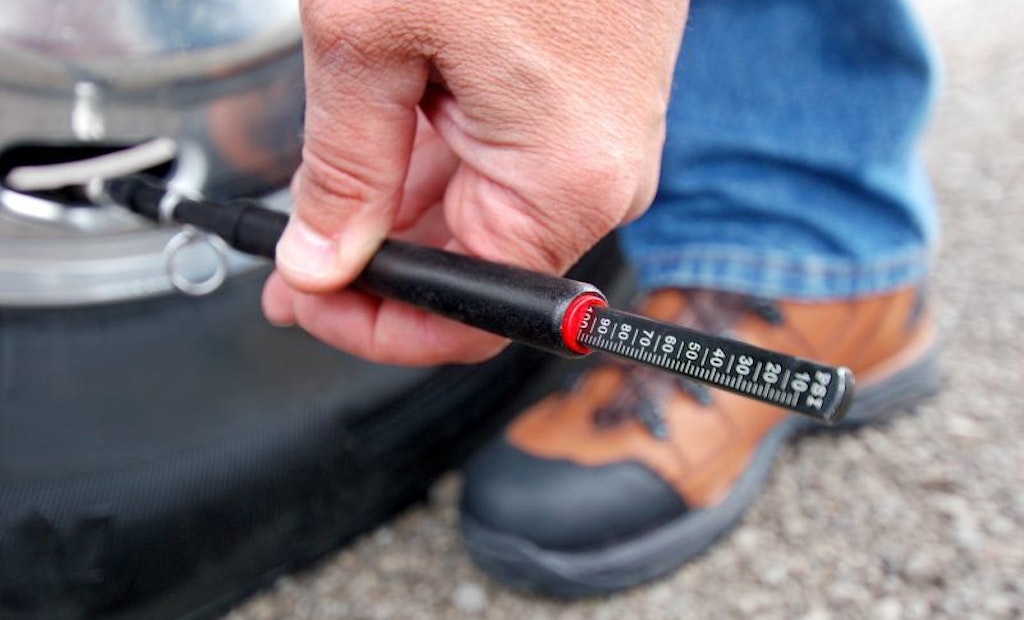
Interested in Trucks?
Get Trucks articles, news and videos right in your inbox! Sign up now.
Trucks + Get AlertsFace it, tires are expensive. To get the most value from yours, make certain they’re properly inflated. As simple as that sounds, how many of us take the time each day to check the air pressure?
Proper inflation is the single most important factor in extending tire life, says Gary Schroeder, director of commercial vehicle and OEM sales for Cooper Tire and the Roadmaster brand.
“Over and underinflation have negative effects on the tire by changing its footprint,” he says. “Underinflation causes excessive heat buildup and internal structural damage. Overinflation makes it more likely for tires to become punctured or broken by sudden impact.”
Here are a few other tips for tire savings:
1. Follow axle scale weight
Don’t rely on the sidewall of your tire for correct inflation. The sidewall number indicates the maximum load of the tire and the corresponding maximum cold inflation pressure for that load when used in a single or dual configuration. It does not indicate the manufacturer’s recommended inflation pressure.
For commercial vehicles, tire inflation should be based on scale weight by axle and the load/inflation chart for the appropriate tire size.
“There are two scales for truck tires,” Schroeder says. “One is for singles, like steer tires, and the other is for dual tires. A 12,000-pound steer axle with 295/R22.5 tires calls for a minimum of 110 psi to carry 6,175 pounds per tire. A 13,000-pound axle calls for 120 psi to carry 6,610 pounds per tire. A dual axle may weigh 18,000 pounds. That’s 4,500 pounds per tire, requiring 85 psi.”
2. Look for zippers
Running tires flat or 80 percent underinflated can damage their internal structure, leading to fatigue or a zipper rupture.
“A zipper rupture is a tire with a line of exposed broken cords that usually measures 12 inches or more located in the mid to upper sidewall of the tire,” Schroeder says.
3. Rotate your tires
Since each tire carries a different weight, tires should be rotated to equalize wear. Typically, left-front tires wear quicker than right-fronts.
“Trucks with dual drive axles should have a tire rotation if the wear gets to 3/32nds of an inch to 4/32nds of an inch difference from axle to axle,” Schroeder says. “Irregular wear needs to be noted and a cause determined.”
A common practice is to rotate steer tires side to side every 5,000 to 8,000 miles. Tires also can be rotated in an X pattern, although inner tires can make the process unattractive. The least desirable rotation method is front to back or back to front.
4. Consider nitrogen
NASCAR teams, commercial airlines and NASA use nitrogen rather than air to inflate tires, primarily because of its chemical properties. Nitrogen maintains tire pressure longer, resists heat buildup and reduces the potential of freezing at high altitudes. Compressed air typically consists of about 78 percent nitrogen, 21 percent oxygen and 1 percent water vapor.
“Nitrogen is an inert, nonflammable gas that does not harm tires,” Schroeder says.
Because oxygen molecules are smaller than nitrogen, they pass through tire walls quicker. Truck tires with compressed air can lose up to 2 psi per month. In contrast, tires filled with nitrogen take up to six months to lose 2 psi.
Oxygen in compressed air can cause steel tire cords to rust. It also causes tires to oxidize, accelerating the rate at which rubber becomes brittle. Nitrogen does not.
While air, for the most part, is free, nitrogen can cost $2 to $10 per tire, although many providers offer lifetime fill-ups.
5. Don’t rely on age
A tire is considered “in service” the day of manufacture, even if stored and not mounted. For this reason, it’s best to purchase the newest tires possible.
“Tires that are 10 or more years old should be replaced even if the tires appear to be undamaged and have not reached their tread wear limits,” Schroeder says. “In some cases, a vehicle manufacturer may make a recommendation for tire replacement earlier than 10 years.”
Hint: A tire’s “born on” date or tire identification number (TIN) can be found on the sidewall as part of the Department of Transportation number, and notes the week and year the tire was made. DOT H25R YC24 4305, for example, indicates the 43rd week (October) of 2005.
6. Match tires to application
When purchasing new tires, make sure they’re a good match for the application.
“A tire designed for long-haul trucks will not necessarily do well in a mixed-service application,” Schroeder says. “Tires used on both paved highways and gravel roads, or even off-road, require a different tread design and cut/chip-resistant tread to give good service.”





